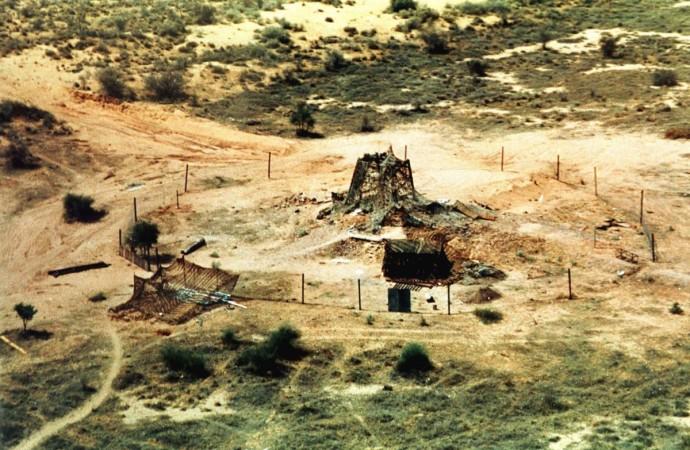
The India-Pakistan military balance has come back to the fore again after a global weapons monitor published a report that showed that India was lagging behind its close-door rival in terms of the number of nuclear warheads.
A report by the Stockholm International Peace Research Institute (SIPRI) said while Pakistan has 140-150 nuclear warheads, India has only 130-140. The report also said the larger military force in the region, China, outstrips both India and Pakistan with as many as 280 nuclear warheads.
In an armed conflict scenario, what does this mean? Is India on a weaker wicket because it has fewer nuclear warheads than Pakistan? Are India and Pakistan on the road to further ramping up their nuclear arsenal?
More importantly, will the concept of nuclear deterrence become eventually irrelevant if both countries are stockpiling nuclear weapons?
The Cipri report says that both India and Pakistan are expanding their nuclear weapons collection. "India and Pakistan are both expanding their nuclear weapon stockpiles as well as developing new land, sea and air-based missile delivery systems," the report said.
Does that mean the race is on? If the race for domination is pivoting on the number of warheads what is actually the use of the nuclear deterrence?
Meanwhile, the Indian defence establishment downplayed the skewed balance in terms of the number of nuclear bombs. "The number of warheads do not really matter. With a declared no-first use (NFU) nuclear policy, India is keen to ensure survivability and credibility of our assets ... and nuclear command, control and communication systems for assured second-strike capabilities…We have achieved this to a large extent," a defence source told the Times of India.
Why doesn't India give utmost importance to the number of warheads even though it is tied in a deadly race with an aggressive neighbour? For comparison, the US and the USSR, when they were locked in what looked like an irreversible arms race, piled up nuclear weapons in thousands. After a certain level of cutbacks in the post-cold war era, these countries still have 6,450 and 6,850 nuclear warheads respectively.
India is not intent on having a leg-up on Pakistan on this front, despite developing nuclear weapons technology before it. This is explained by the fact that India treats nuclear weapons only as a deterrent. India abides by the 'no first strike' stance and is ready for massive and quick retaliation in case it is attacked.
However, if Pakistan builds a stockpile, and India does so too, the game changes. Deterrence will become rather irrelevant. Theoretically, the presence of nuclear weapons on both sides prevents a war. The Cuban Missile crisis that nearly put the US and USSR on the brink of a catastrophic war is an oft-repeated example. However, the counter argument is that it was the nuclear arms race that brought the two military superpowers to the brink of a war.
In the case of India and Pakistan, the presence of nuclear weapons on either side did NOT prevent conventional wars. Pakistan conducted its first nuclear test on 28 May 1998. India had conducted its first test 24 years ago, on 18 May 1974. India and Pakistan went to a full-scale war in Kargil a year after Pakistan arrived in the nuclear club.
If the latest reports are to be believed, Pakistan is going ahead with a plan to widen the gap between India on the nuclear arsenal front. India, on the other hand, believes that it has clear superiority in conventional warfare.
The graph below shows how India and Pakistan stack up in terms of military balance. Indian defence analysts are certain that India can vanquish its neighbour in any sort of conventional warfare.

But then on the sidelines, a race -- a nuclear race for that matter -- is on. Deterrence has long remained a myth and it may soon be a totally irrelevant concept.









